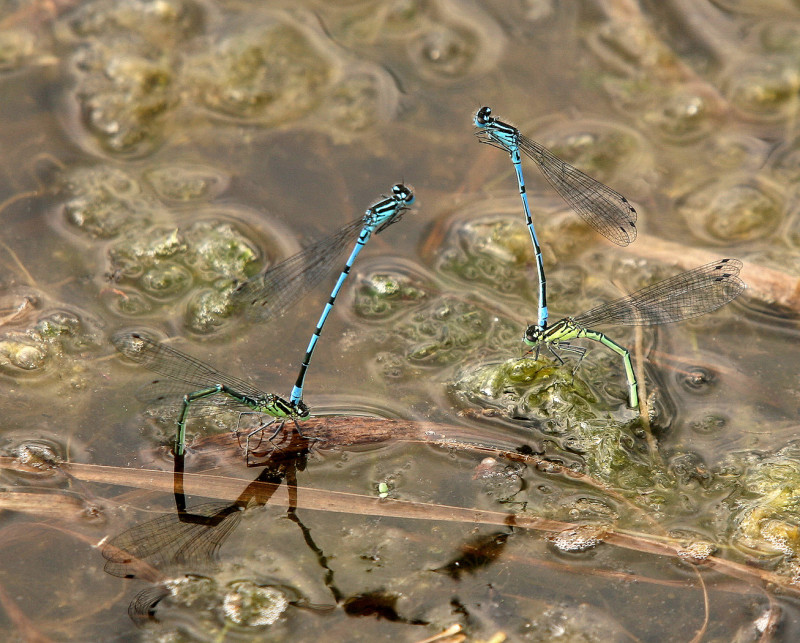Endophytic
Endophytic eggs are actually inserted into a substrate usually plant tissue. The eggs tend to be elongated in shape and are laid at a rate of 1-18 per minute (Corbett, 2004) sometimes in a species specific pattern. Eggs are inserted using the ovipositor, a specialised organ that is situated on the underside of the abdomen. All damselflies and hawker dragonflies oviposit in this way and the ovipositor is consequently blade like enabling the insect to cut into the plant material or other substrate.
Female Brown Hawker laying endophytic eggs in wood. Photograph © P. Spear
Exophytic
Exophytic eggs are laid simply by the female dipping the tip of the abdomen beneath the water whilst in flight. The eggs tend to be spherical in shape and are simply washed off and sink to the bottom. Some species lay their eggs in gelatinous masses which adhere to submerged plants, the jelly also affording a degree of protection. The comparative simplicity of this method lends itself to astonishing oviposition rates that may exceed 1000 eggs/minute (Corbett & Brooks, 2008).
Pair of Common Darters ovipositing exophytically. Photograph © P. Spear
Though typically eggs are laid into water or vegetation, species such as the Brown Hawker are often seen ovipositing into rotten wood or mud and the Southern Hawker has a long list of weird and wonderful ovipositing locations ranging from jumpers to shoes and even a human ankle! (Corbett, 2004). The Migrant Hawker is known to oviposit in vegetation above the water level and some damselflies such as the Common Blue Damselfly are also known to climb down plant stems up to 1 metre below the water surface to oviposit. They can remain there for up to thirty minutes using air trapped in the wings to breathe before floating back up to the water surface where the male then assists in the female’s escape from the water surface tension. All of the aforementioned species are found in Shropshire as is the Golden-ringed Dragonfly which oviposits by dramatically stabbing the end of the abdomen into the base of streams giving the appearance the female is on a pogo stick!
Females oviposit alone or in tandem with the male following mating. Generally Hawkers, Clubtails, Emeralds and Golden-ringed Dragonflies oviposit alone whilst damselflies and some Darters remain in tandem. In some species such as Chaser and Skimmer Dragonflies though the pair are not in tandem, the male can be seen in close proximity guarding the female and ready to chase off other male intruders.
References
Corbet, P.S. (2004) Dragonflies: Behaviour and Ecology of Odonata (Revised Edition). Colchester: Harley Books.
Corbet, P.S. & Brooks, S.J. (2008) Dragonflies. London: Collins.




